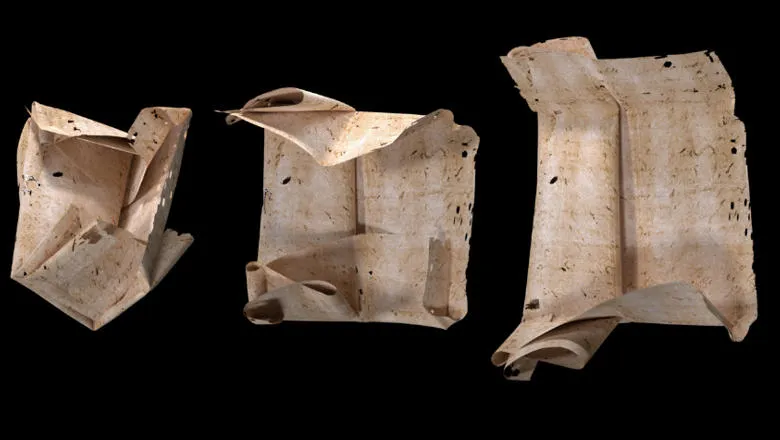02 March 2021
X-rays, algorithms, and “letterlocking” reveal the secrets of sealed historic letters
Preserving valuable evidence in 17th Century sealed letters through innovative computational techniques.

Virtually unfolding intricately folded letters has allowed experts to preserve valuable physical evidence in historic documents.
In a world-first, an international team of researchers, including Dr Daniel Smith, Lecturer in Early Modern English Literature at King’s College London, x-ray scanning experts at Queen Mary University of London, and led by the Massachusetts Institute of Technology Libraries, has read an unopened letter from early modern Europe, without breaking its seal or damaging it in any way.
‘This algorithm takes us right into the heart of a locked letter,’ the research team explains. ‘Sometimes the past resists scrutiny. We could simply have cut these letters open, but instead we took the time to study them for their hidden, secret, and inaccessible qualities. We’ve learned that letters can be a lot more revealing when they are left unopened. Using virtual unfolding to read an intimate story that has never seen the light of day – and never even reached its recipient, – is truly extraordinary.’
Computational flattening algorithms were applied to X-ray microtomography scans of unopened letters from a 17th-century postal trunk full of undelivered mail. The senders of these letters had closed them using “letterlocking,” the historical process of folding and securing a flat sheet of paper to become its own envelope. The team was able to examine letters’ contents without irrevocably damaging the systems that secured them, a breakthrough for the study of historic documents, as the papers’ folds, tucks, and slits are themselves valuable evidence for historians and conservators.
This process was used to reveal the contents of a letter dated July 31, 1697. It contains a request from Jacques Sennacques to his cousin Pierre Le Pers, a French merchant in The Hague, for a certified copy of a death notice of one Daniel Le Pers (full transcript and images available). The letter gives us a fascinating insight into the lives and concerns of ordinary people in a tumultuous period of European history when correspondence networks held families, communities, and commerce together over vast distances.

